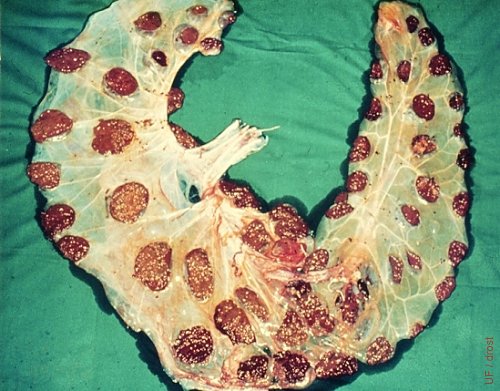
Third Trimester Fetal Membranes.
Normal fresh fetal membranes at or near term. Note the 4 rows of approximately 15 cotyledons each per horn, and the umbilical stump and cotyledonary vessels.
Drost M (1978)

Third Trimester Caruncles.
The gravid horn of the uterus of a cow in the third trimester has been opened to show the linear arrangement of the four rows of caruncles. There generally are 15 caruncles per row. The caruncles nearest the fetus and along the lesser curvature, where the major blood supply is, are the largest.
Drost M (1978)
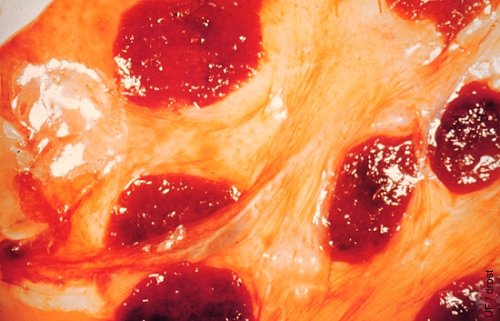
Normal Cotyledons.
Normal third trimester (fetal) cotyledons as pulled away from the (maternal) caruncle.
Drost M (1978)
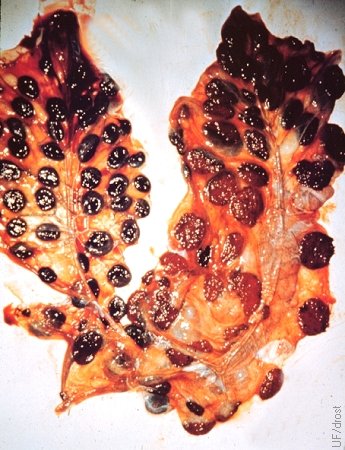
Term Placenta.
These fetal membranes were expelled 4 hours after calving. The pregnant horn contained 52 cotyledons, the nonpregnant horn 50 cotyledons. The membranes weighed 5.5 kg. Singleton calf.
Roberts SJ (1973)
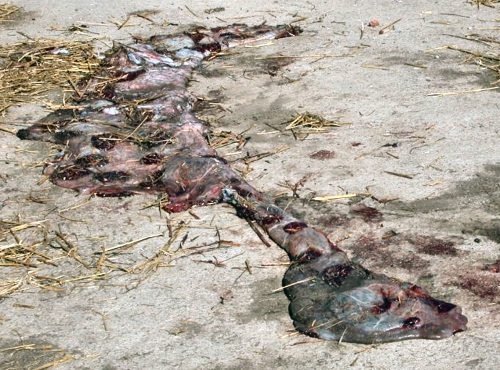
Fetal Membranes at Birth.
Normal intact afterbirth delivered spontaneously within 8 hours after the delivery of a single calf at term. The maternal side is shown with fresh cotyledons. Generally there are four rows of approximately 15 cotyledons each per horn.
Benz M (2009)
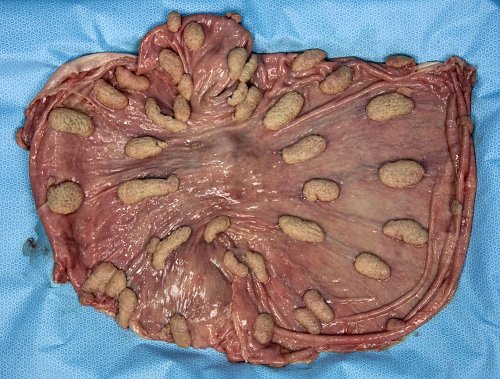
Normal Caruncles.
Normal luminal view of third trimester caruncles.
Drost M (2009)
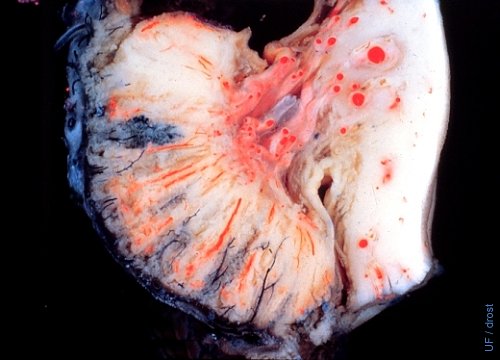
Circulation of the Placentome.
Cross-section of a placentome at 119 days of gestation. The specimen was injected with latex: blue for the fetal vessels and red for the maternal circulation.
Drost M (1978)
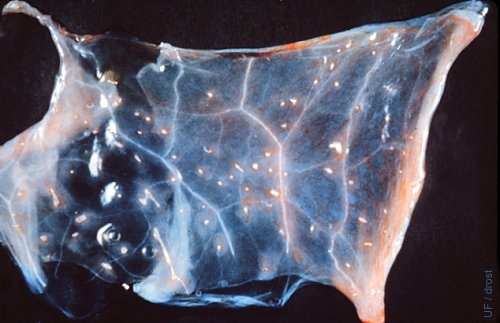
Epithelial Plaques.
Normal epithelial plaques on the fetal side of the amnion.
Drost M (1978)

Amniotic Plaques.
Epithelial plaques shown on the fetal side of the amnion. There is no known functional role for these epithelial structures.
Drost M (1978)
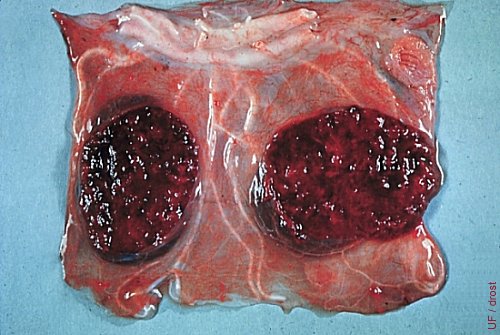
Normal Fresh Cotyledons.
Cotyledons are the fetal counterpart of the maternal caruncle. Together they form a placentome. The villous surface of the cotyledon interdigitates with the crypts in the caruncle.
Drost M (1978)
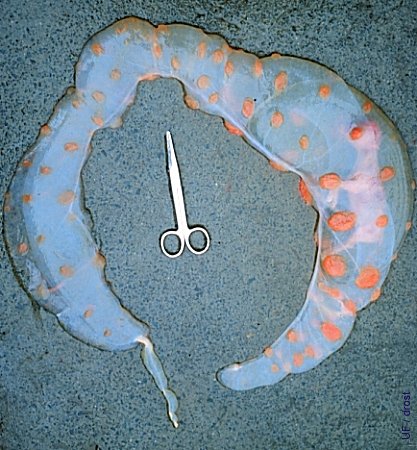
Normal 70-day Conceptus.
Total conceptus consisting of the 70-day fetus, the amnion, and the chorio-allantois. The cotyledons are arranged in four rows in each horn. Placentomes are larger in the proximity of the fetus and smaller in the nongravid horn. The pair of scissors indicates the body of the uterus.
Drost M (1978)
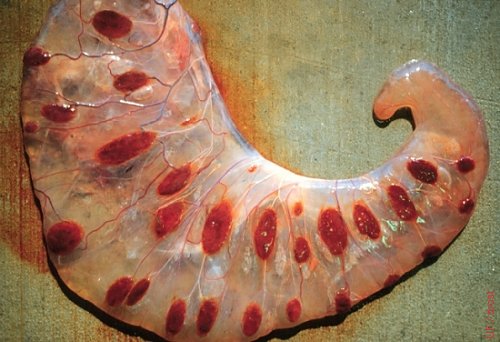
Normal Chorioallantois.
Intact fetal membranes surrounding a 3-to 4-month old fetus. The linear arrangement of the cotyledons reflects the linear arrangement of the caruncles in the endometrium. On average there are four rows of 15 cotyledons in each horn, i.e. 60 per horn, for a total of 120. The caruncles nearest the fetus are the larger ones.
Drost M (1978)
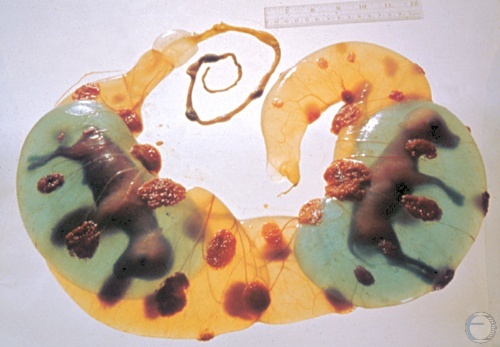
Twin Placentation - 75 Days.
The amniotic sacs have been injected with methylene blue to better illustrate their size. Notice the sharing of the chorioallantois and some of its circulation. The latter leads to freemartinism in the female fetus that is co-twin to a male fetus. Notice also the normal (common) necrotic tip of the left extremity of the membranes.
Drost M (1978)
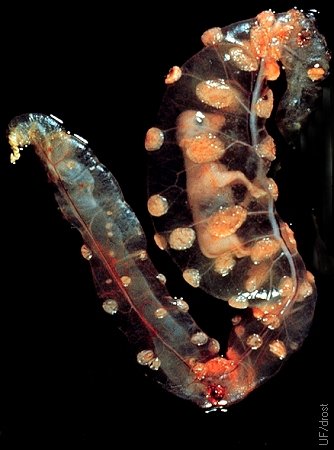
Normal 80-day Conceptus.
Transparent view of an 80-day old bovine conceptus. The major blood vessels run along the lesser curvature of the horns and converge to form the umbilical cord.
Drost M (1978)
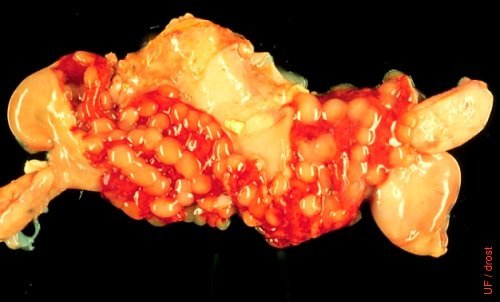
Neonatal Caruncles.
At birth the endometrium displays prominent caruncles as shown in this specimen from a stillborn heifer calf. Presumably the development is due to the current endocrinological milieu. This is a temporary appearance.
Drost M (1978)

